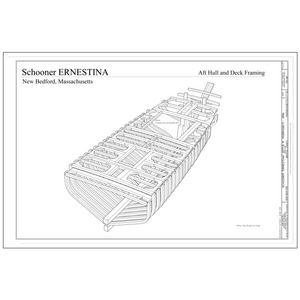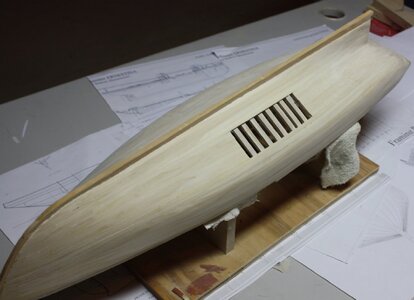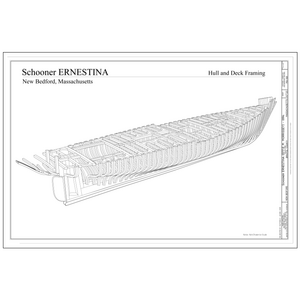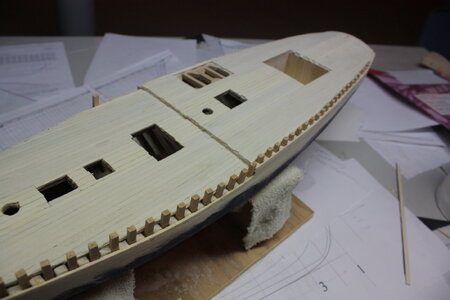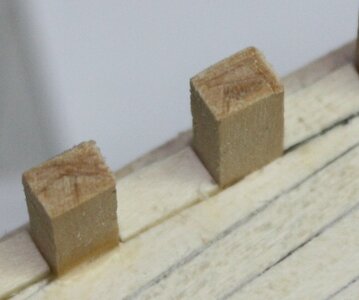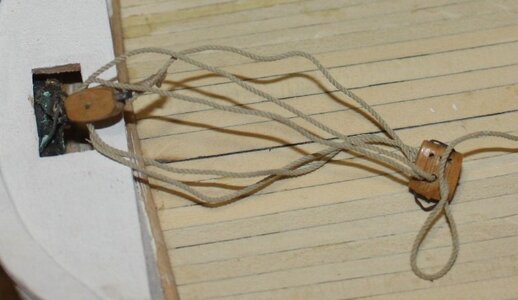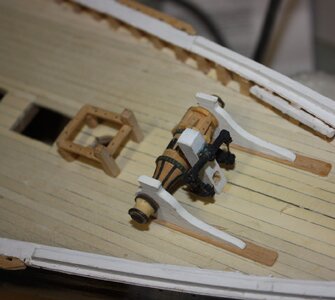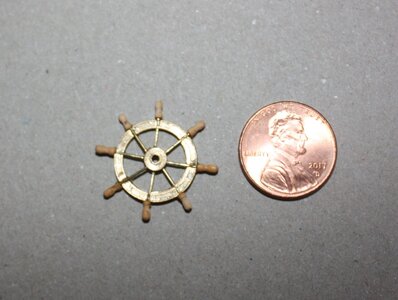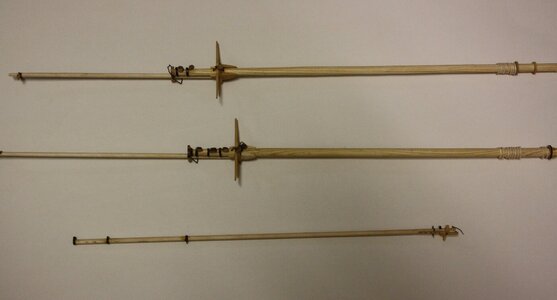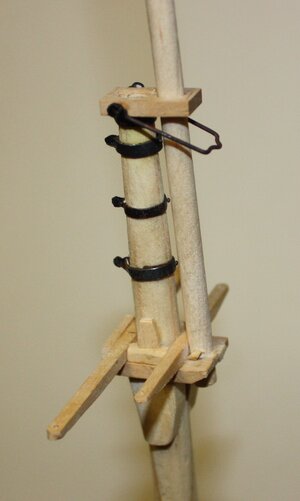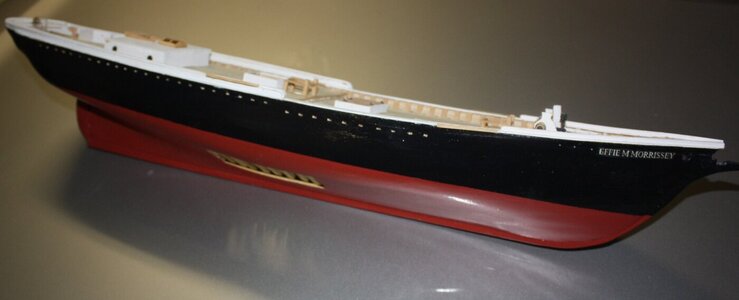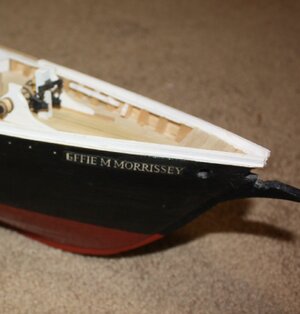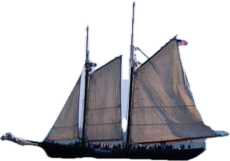The Ernestina, ex- Effie M. Morrissey A little history I hope readers find interesting. For me, research and history are part of the fun for any build.
Bob Bartlett’s pride and joy, the Schooner Morrissey, or "little Morrissey" as he called his ship, is perhaps most well known for the twenty years spent with him in Arctic waters, but the schooner’s career began in 1884 and is still going strong. The Morrissey was built at the James and Tarr Yard in Essex, Massachusetts for co-owners J.F. Wonson and Co. and Captain William Morrissey, who named the ship the Effie M. Morrissey after his young daughter. For the first thirty years, the 114-foot long, two-masted schooner was variously a fishing vessel and cargo ship. The Morrissey’s speed, cargo capacity, maneuverability, and elegance earned a reputation that caused Frederick William Wallace, in 1912, to give the Morrissey a taste of fame in the form of a published account of his experiences on board. Wallace also wrote "The Log of the Record Run," a ballad about a 225-mile passage made by the Morrissey in 18 1/2 hours in gale-force winds. Today, the story is deeply ingrained in fishing folklore. That same year, Bob Bartlett’s uncle, Captain Harold Bartlett, bought the Morrissey as a cargo ship to carry coal and other supplies between Newfoundland and Labrador.
In 1925, Bob Bartlett bought the Morrissey from his uncle and outfitted the ship for Arctic work. The hull was sheathed with 2-inch thick greenheart, the toughest wood known, to help protect from the crushing ice, and a diesel engine was installed. For the next 20 years, Bartlett and the Morrissey sailed to the Arctic, carrying scientific researchers, adventurers, and filmmakers. Bartlett experienced so many narrow escapes with the Morrissey that the crew thought the ship was well nigh unsinkable. In 1941, the Morrissey reached the farthest north of any wooden sailing vessel when it sailed within 600 miles of the North Pole. During World War II, the Morrissey performed surveys of the waters around Greenland for the U.S. Navy. In 1946, Bob Bartlett died and the Morrissey was abandoned after her galley caught fire. Three years later she was refitted and renamed the Ernestina after her new owner’s daughter.
The Morrissey, now the Ernestina, became a transatlantic packet operated by Captain Henrique Mendes. The schooner carried people and cargo between the United States and the Cape Verde Islands, off the west coast of Africa. From 1967 until 1975, the Ernestina retired to inter-island trade when Mendes could not compete with a seven-day steamship service along the same transatlantic route. In 1975 the newly independent Republic of Cape Verde gave the Ernestina back to the United States as a symbol of the ties that linked the two nations, but it was not until 1982 that the ship actually returned to homeport in New Bedford, Massachusetts, as an educational vessel. The Ernestina, ex- Effie M. Morrissey, is the only surviving sailing transatlantic packet schooner to carry immigrants to America and is one of two remaining sailing Arctic vessels that still sail coastal waters.
I downloaded a rather detailed set of plans of her in her various configurations from the Library of Congress website at no cost.
https://www.loc.gov/resource/hhh.ma1719.sheet?st=gallery They also have a number of photos of her from the past and there are a lot of photos of her at Bristol Marine in Maine during her rebuild a couple years ago.
A typical drawing from the LoC is below.
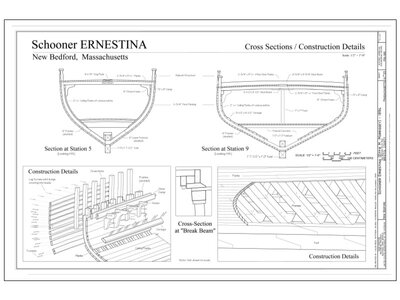
First up was preparing drawings of the structure. For the frames I used the station lines to draw each frame. The sheet of aft frames can be seen below as an example.
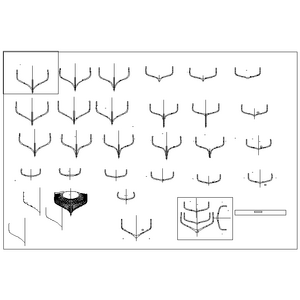
For the keel, stem and sternpost I enlarged the appropriate LoC drawing and made two copies, one to make the various pieces and one to assemble the pieces. The additional piece of wood under the keel in the second photo below was temporary and used to account for the angle of the keel and helping in setting the frames vertically rather than 90 degrees to the keel.
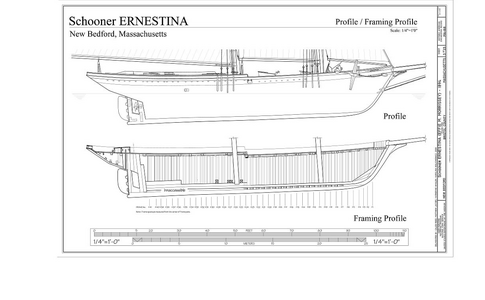
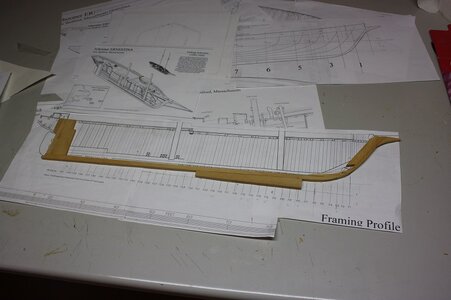
Bob Bartlett’s pride and joy, the Schooner Morrissey, or "little Morrissey" as he called his ship, is perhaps most well known for the twenty years spent with him in Arctic waters, but the schooner’s career began in 1884 and is still going strong. The Morrissey was built at the James and Tarr Yard in Essex, Massachusetts for co-owners J.F. Wonson and Co. and Captain William Morrissey, who named the ship the Effie M. Morrissey after his young daughter. For the first thirty years, the 114-foot long, two-masted schooner was variously a fishing vessel and cargo ship. The Morrissey’s speed, cargo capacity, maneuverability, and elegance earned a reputation that caused Frederick William Wallace, in 1912, to give the Morrissey a taste of fame in the form of a published account of his experiences on board. Wallace also wrote "The Log of the Record Run," a ballad about a 225-mile passage made by the Morrissey in 18 1/2 hours in gale-force winds. Today, the story is deeply ingrained in fishing folklore. That same year, Bob Bartlett’s uncle, Captain Harold Bartlett, bought the Morrissey as a cargo ship to carry coal and other supplies between Newfoundland and Labrador.
In 1925, Bob Bartlett bought the Morrissey from his uncle and outfitted the ship for Arctic work. The hull was sheathed with 2-inch thick greenheart, the toughest wood known, to help protect from the crushing ice, and a diesel engine was installed. For the next 20 years, Bartlett and the Morrissey sailed to the Arctic, carrying scientific researchers, adventurers, and filmmakers. Bartlett experienced so many narrow escapes with the Morrissey that the crew thought the ship was well nigh unsinkable. In 1941, the Morrissey reached the farthest north of any wooden sailing vessel when it sailed within 600 miles of the North Pole. During World War II, the Morrissey performed surveys of the waters around Greenland for the U.S. Navy. In 1946, Bob Bartlett died and the Morrissey was abandoned after her galley caught fire. Three years later she was refitted and renamed the Ernestina after her new owner’s daughter.
The Morrissey, now the Ernestina, became a transatlantic packet operated by Captain Henrique Mendes. The schooner carried people and cargo between the United States and the Cape Verde Islands, off the west coast of Africa. From 1967 until 1975, the Ernestina retired to inter-island trade when Mendes could not compete with a seven-day steamship service along the same transatlantic route. In 1975 the newly independent Republic of Cape Verde gave the Ernestina back to the United States as a symbol of the ties that linked the two nations, but it was not until 1982 that the ship actually returned to homeport in New Bedford, Massachusetts, as an educational vessel. The Ernestina, ex- Effie M. Morrissey, is the only surviving sailing transatlantic packet schooner to carry immigrants to America and is one of two remaining sailing Arctic vessels that still sail coastal waters.
I downloaded a rather detailed set of plans of her in her various configurations from the Library of Congress website at no cost.
https://www.loc.gov/resource/hhh.ma1719.sheet?st=gallery They also have a number of photos of her from the past and there are a lot of photos of her at Bristol Marine in Maine during her rebuild a couple years ago.
A typical drawing from the LoC is below.

First up was preparing drawings of the structure. For the frames I used the station lines to draw each frame. The sheet of aft frames can be seen below as an example.

For the keel, stem and sternpost I enlarged the appropriate LoC drawing and made two copies, one to make the various pieces and one to assemble the pieces. The additional piece of wood under the keel in the second photo below was temporary and used to account for the angle of the keel and helping in setting the frames vertically rather than 90 degrees to the keel.





